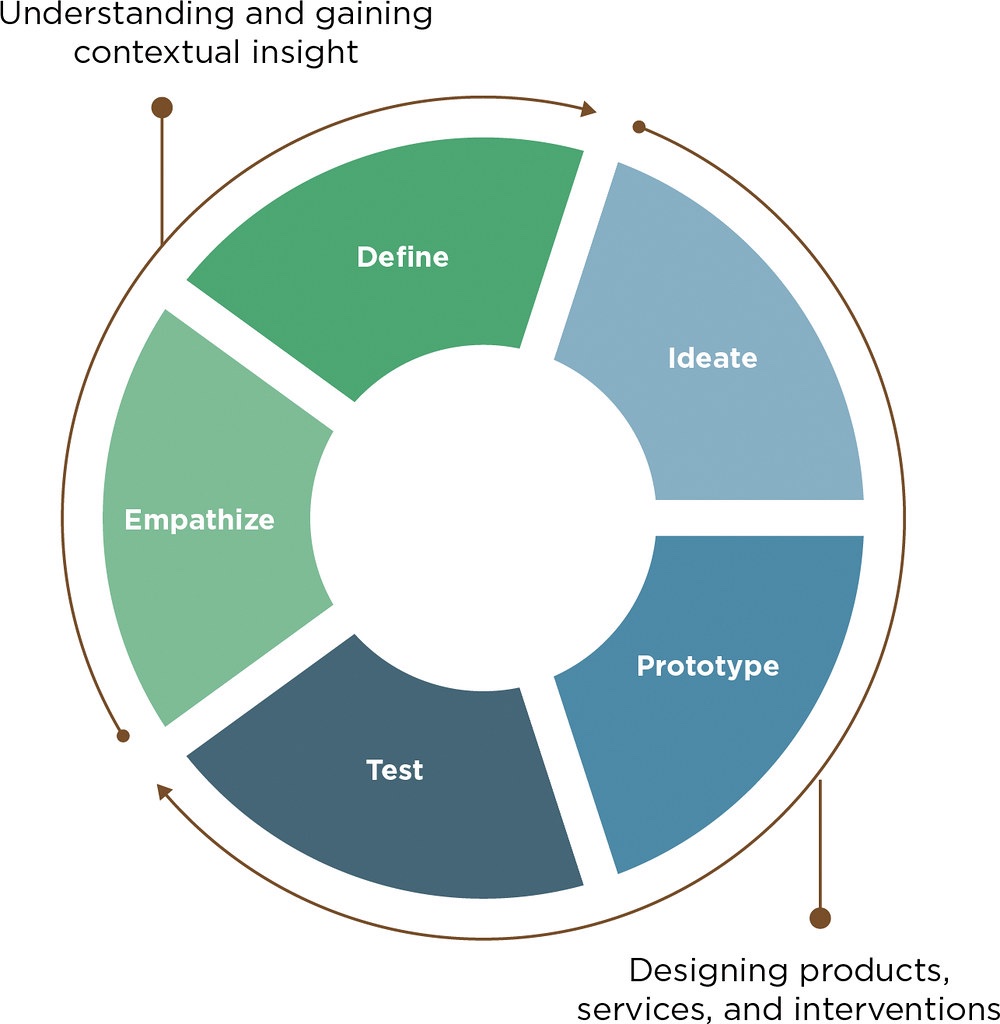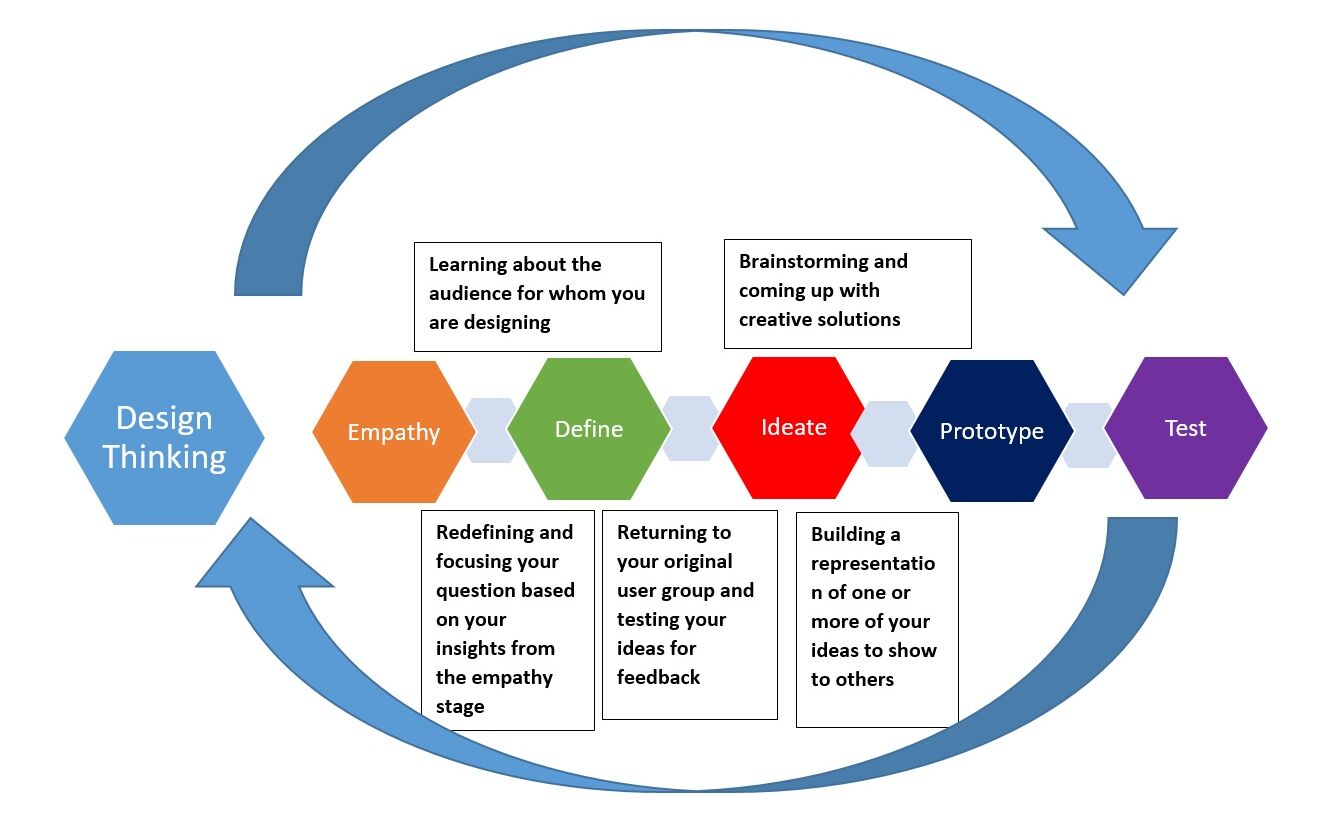“Everything that can be invented has been invented.” Charles H. Duell, a commissioner of the US patent office, said this in 1899. Clearly, the past century proves Mr. Duell wrong. There are an endless number of companies developing and producing new products throughout the globe. New products and inventions are coming out in the high-tech sphere practically every week, at this point. This makes it difficult for companies to decide which ideas are worth pursuing and which would be market failures. Therefore, we need a better way to create, improve, and push new ideas out into the market. This is accomplished through Design Thinking, which is especially important for products intended for engineering end-users.
What is Design Thinking?
Design Thinking is human-centric design that focuses on finding solutions to problems and improving products by understanding the end-user desires. This process allows us to integrate both people and philosophy to create products that fulfill unmet customer needs. This method has become popular because it brings creativity back into the workplace. Companies stop looking for creative solutions to solve their problems and instead focus so much on trying to avoid the failure of their products and services. Rather than trying to flawlessly plan out every step of a new product design, it is better to test rigorously so that you can fail faster. Focusing on innovation rather than execution is the key to success.

Design Thinking. Image courtesy of Dean Long Digital Marketing
Design Thinking Process
So how do we do this? The Design Thinking Model makes up of five simple steps; Empathize, Define, Ideate, Prototype, and Test. This model was proposed by the Hasso-Plattner Institute of Design at Stanford and defines human-centric design as a methodology for creative problem-solving. While this process is not linear and each step is likely to repeat, all are important and bring you closer to your desired outcome. Let us now introduce these five steps.
Stage One: Empathize
Empathy is the first stage of the Design Thinking Model because it is the most human-centered component of the process. It allows us to realize why this product means so much to the end-user and why it has a market. One’s feelings towards a product are often not the same as another’s feelings. Hence, it is essential to see the need for the product through another’s eyes instead. Appreciating why people do things the way they do and what they value will help build the best design. This understanding is done through observing, engaging, and listening. Watch people, see how they behave, and view the world around them. Engage with them, take part in a conversation, and ask questions to learn more about their stories. And finally, listen to people, and really try to grasp what is going on in their minds. Empathy is the first step to human understanding.
Stage Two: Define
Next up, we have the Define stage. The defining stage is all about taking all of the information you accumulated in the Empathy stage and starting to make sense of it. By interpreting everything you learned from those you observed, you can figure out the right problem to solve. Once you know what challenge it is that needs a resolution, you begin to find the best possible solution. Framing the problem gives you an understanding of the user, and their needs, and helps you comprehend your insight of them as well. All of this together will lead the rest of your design work.
Stage Three: Ideate
The transition from defining to ideating is where the brainstorming part of the process begins. This is when ideas pour out and the foundation starts to build. This doesn’t necessarily mean you have to decide on one single idea, you are simply coming up with a wide variety of ideas that may be feasible. The primary goal is to get the ideas in your head out and into the discussion. You can structure the process by adding constraints as to how you want the product to look, how much it costs, how fast it can be manufactured, and more. As this stage comes to an end, you can begin to pick two or three ideas that can move into prototyping.

Various stages of design thinking process. It is a recursive process often requiring completion of multiple cycles to generate the perfect design.
Stage Four: Prototype
The second to last stage is where questions get answers. Creating cheap interactive prototypes quickly will allow companies to go through several ideas while gaining feedback from users. If a product fails, it will fail quickly without the loss of profit. This narrows down the field of ideas for products worth pursuing and where the money goes. Stage Four also is helpful for knowing which variables need to change for future designs and how. While designing prototypes and testing them are essentially done at the same time, creating the prototype must be done before you can learn from it.
Stage Five: Test
Now comes the final stage; testing. Testing is where you learn the most. This stage allows you to not only learn more about the prototype but about the user’s needs as well. The Hasso-Plattner Institute of Design at Stanford states, “Prototype as if you know you’re right, but test as if you know you’re wrong,” Design Better. When creating your prototype, design it as if you know exactly what you are doing, however, when testing, understand that you are probably wrong. Testing gives you the opportunity to improve and perfect your design. Be open to learning and adjusting as you go along the process of design.
How to Implement Design Thinking in Marketing
We have gone through the different stages of the Design Thinking Process. Now how do we use this to improve our company’s marketing? Marketing is about getting users’ interest in your company’s products or services. What better way to get your target market to buy your products than by sharing their values and showing them you understand their needs? Since Design Thinking is a human-centric approach to creation, it requires you to empathize with your customers and build an emotional connection with them. When users feel as though a company truly has an insight into their struggles and needs and is doing everything it can to help solve their problems, they will support the products.
Design Thinking teaches people how to observe and perceive the world around them, and then use knowledge and craft to create a product with value. This is synthesizing. According to Roger Martin in The Design of Business, “Synthesis is the marriage of intuition and analysis,” The Design of Business. Combining logic and skill with empathy and understanding will get you further than you can ever imagine. Implementing Design Thinking into your company’s systems keeps you from being run over by the hundreds of startups launching their business every year and allows you to keep your competitive advantage. Although it is difficult to come up with new inventions, there is so much left to create. Start with Design Thinking and see how much you can create.

Design Thinking in Marketing. Image courtesy of Wikimedia Commons
If you liked this article, you might also be interested to read our blog post on Google Ads for Marketing Industrial Products.
